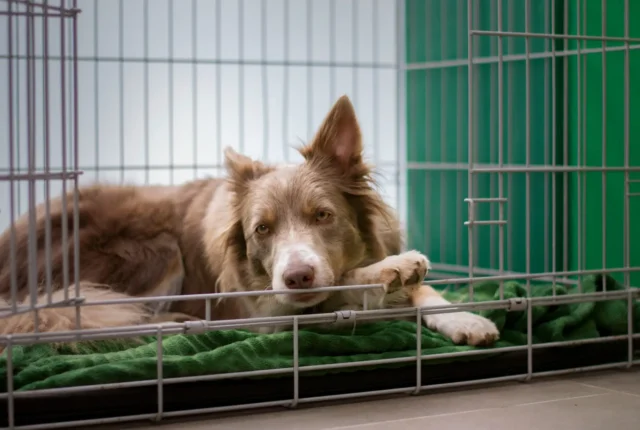
How to Safely Move with Your Cat Cross-Country
Wondering how to move with a cat across the country? You’re not alone. For many cat parents, the idea of a long-distance move brings up big questions — how do you keep your cat safe, calm, and comfortable the entire way?
At Cabin Companions, we’ve helped thousands of families move with their cats by both air and ground. In this guide, we’ll walk you through some top tips about what works (and what doesn’t) — so you can plan a smooth, low-stress move for you and your cat.
What Are Your Options for How to Move With a Cat Cross-Country?
If you’re wondering how to move with your cat long-distance, you have a few main options for transporting your cat:
- In-cabin air travel. Your cat flies in the cabin with you — or with a professional cat flight nanny.
- Private ground transport. Door-to-door travel with a dedicated escort in a climate-controlled vehicle.
- Driving yourself. Traveling with your cat in your own car — this can work for some cats and families.
- Cargo shipping. We generally do not recommend this for cats, due to increased risks and stress.
Why In-Cabin or Private Ground Transport Is Safest
In our experience, the safest and least stressful options for cats are in-cabin flights or private ground transport.
Both allow your cat to be:
- Supervised at all times
- In a temperature-controlled environment
- Handled by someone familiar with feline care
- Protected from the risks of cargo holds or public shipping services
Whenever possible, we advise choosing one of these two options — based on your cat’s needs and the details of your move.
How to Prepare Your Cat for a Cross-Country Move
No matter how your cat is traveling, preparation makes a big difference. Here are a few things we recommend:
- Choose the right carrier. Use a soft-sided, well-ventilated carrier that meets airline or vehicle safety guidelines.
- Acclimate your cat. Let your cat explore the carrier well in advance of the trip, using treats and positive reinforcement.
- Plan feeding and hydration. For most cats, we recommend a light meal several hours before travel and access to water throughout the journey.
- Discuss calming options with your vet. Some cats benefit from products like Feliway spray or other vet-recommended calming aids — but always check with your veterinarian first.
- Plan for hotel stays (if driving). If you’re doing a multi-day drive, be sure to choose cat-friendly accommodations in advance.
Air vs Ground: Which Is Better for Your Cat?
The best travel option depends on your individual cat and your move:
Air travel may be best if:
- Your cat is healthy and comfortable in their carrier
- You’re looking for the fastest travel time
- The route allows for a safe, direct flight
Ground transport may be better if:
- Your cat has medical needs
- Your cat is very anxious in busy environments
- The route is complex or not well-served by airlines
- You prefer door-to-door service without airport transitions
- You’re moving with 3+ cats
If you’re unsure, we’re always happy to help you weigh the options and choose the best fit for your cat.
When to Consider Hiring a Professional Cat Transport Service
When they’re not sure to move with a cat, many cat owners choose to hire a professional transport service for cross-country moves — especially when:
- You can’t travel with your cat yourself
- The route is complex or involves multiple connections
- Your cat has special needs or medical considerations
- You want the peace of mind that comes with expert handling and care
At Cabin Companions, we specialize in safe, expert-led cat transport by air and ground. Our team brings unmatched feline expertise — led by Monica Tarant, the nation’s foremost expert in cat relocation.
Whether your cat is traveling across the country or around the world, we’re here to help make the journey as smooth and stress-free as possible.
If you’d like to learn more, visit:
👉 Cat Flight Nanny Services
👉 Pet Relocation & Ground Transport
Final Tips for a Safe, Low-Stress Move
- Plan ahead. The more time your cat has to acclimate, the better.
- Keep routines as normal as possible. Familiarity helps reduce stress.
- Communicate with your transporter. If you’re hiring a service, share everything you know about your cat’s personality and needs.
- Monitor your cat’s well-being. Watch for signs of stress or discomfort, and adjust as needed during the journey.
With the right preparation and care, learning how to move with a cat cross-country can be a safe and successful experience. And if you’d like expert help, we’re always here to make the trip a little easier — for both you and your cat.
Related posts
How to Relocate Your Pet Safely: A Complete Guide to Pet Transportation
This guide is your one-stop shop for navigating the world of pet relocation.
What to Expect When Flying with Your Pet: The Ultimate Pet Travel Guide
Everything you need to know to make your pet’s flight a breeze—from booking
Pet-Friendly Airlines: Which Airlines Offer the Best Pet Travel Services?
We’ve put together a guide to the best airlines for pet travel and how to choo


